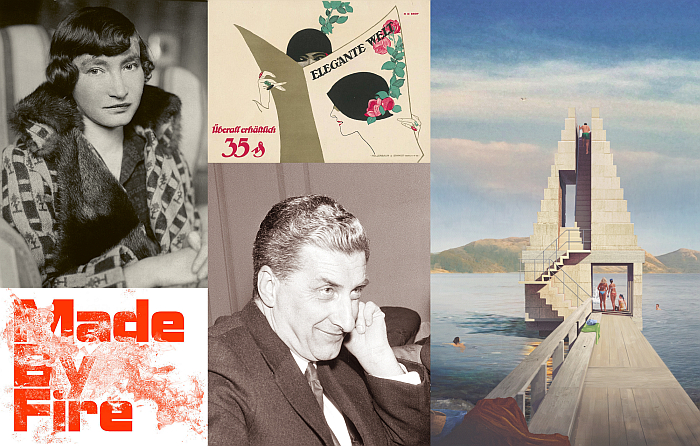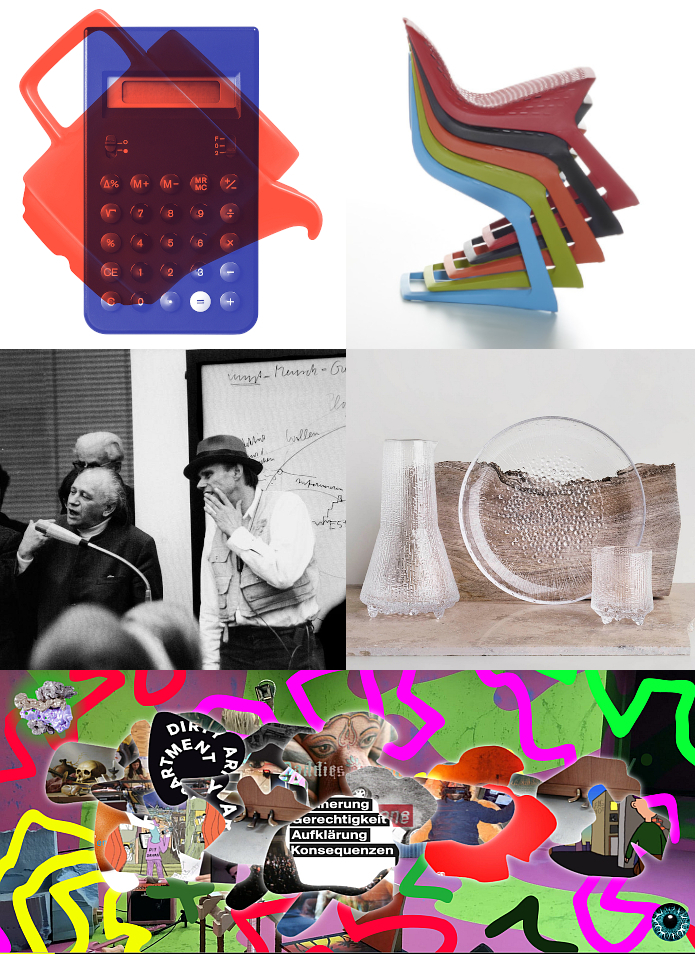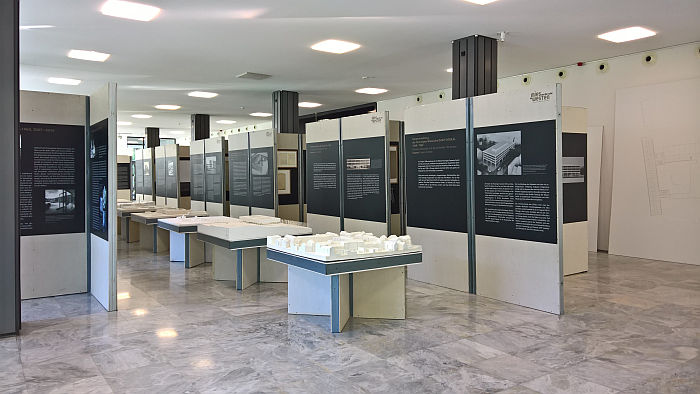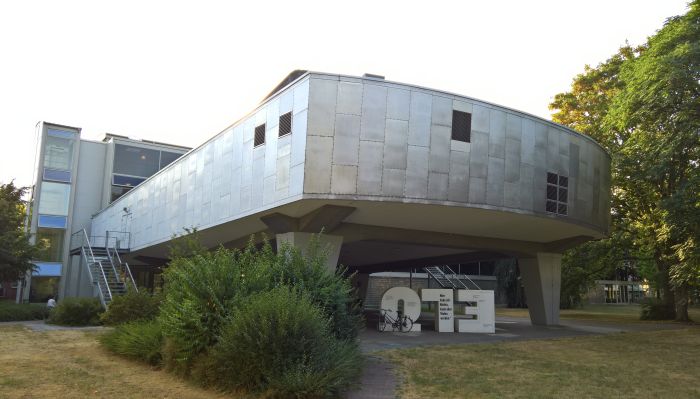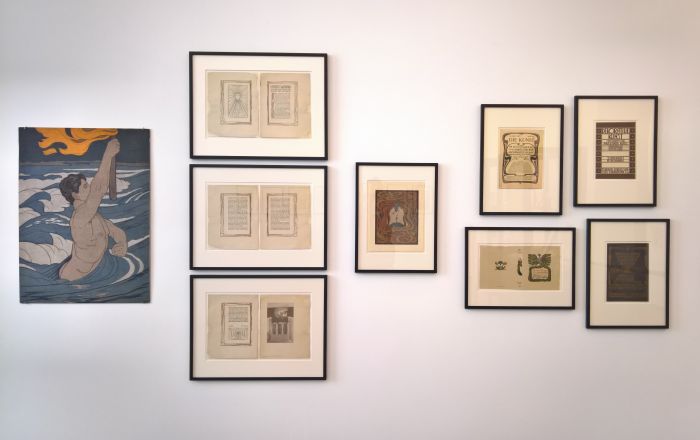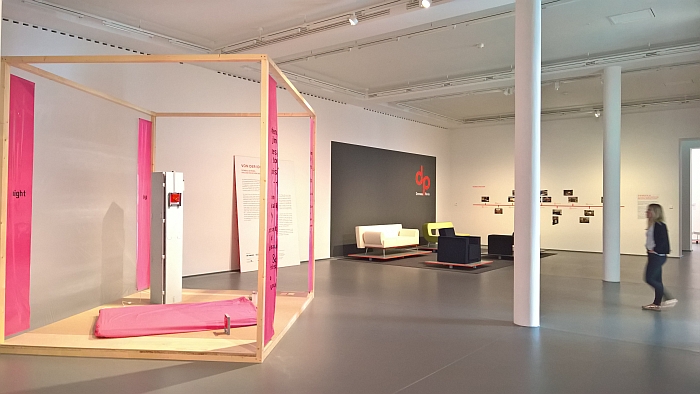5 New Architecture & Design Exhibitions for November 2023
Back in the spring Haitian musician Wyclef Jean informed us all he’d be “Gone Till November”.
And so he should be back any day now; and given how busy he’s invariably been all summer, earning as he has been enough money to buy out blocks, he’s probably not had a chance to visit an architecture or design museum. And so, we assume, will be absolutely desperate to stimulate his cognitive faculties.
Our five recommendations for new exhibitions opening in November 2023 for Wyclef Jean, or indeed for anyone seeking to achieve fresh perspectives on architecture, design and the world around us, can be found in Vienna, Oslo, Brno, Krefeld and Ljubljana…….
5 New Architecture & Design Exhibitions for March 2021
Following the declaration of the French Republic in 1792 a new calendar was introduced in the realms of France: the Revolution had washed away France past and the Republic marked the start of a new reality for mankind, one of universal Liberté, Égalité, Fraternité, and therefore demanded a resetting of the collective clock, a new measuring of time, and thus out went the Gregorian calendar and its historic associations with church and state, and in came le calendrier républicain, the French Republican Calendar.
And while, yes, one can consider the belief amongst the new republicans in the eternal gloriousness of the coming future as somewhat naive, one must remember that we can reflect on their optimism with the benefit of over 200 years hindsight and experience.
The argument for a new calendar appears however as compelling and self-evident as it must have done at its adoption on October 24th 1793. Or 3 Brumaire II, as we believe le calendrier républicain would date the day of its adoption.
Aside from its ten day week, an early attempt at bringing decimalisation to our time keeping, and the bequeathing of every day its own unique name, the principle difference between the Gregorian and Republican calendars is the move from the 12 months of varying lengths inherited from the Romans to twelve months each comprising thirty days, three ten day weeks, and the renaming of the months to give them a connection to nature rather than to Romans: the period between 19/20th February and 19/20th March, that period in which we find ourselves at the time of writing, being known as Ventôse, from venteux, windy, and was preceded by Pluviôse, rainy, and followed by Germinal, germination
Which all strikes us as particularly apposite as we move towards the next phase of our post-pandemic society; as a fresh wind blows the global rain clouds away and ushers in a period of re-birth and springing forth. Yes, such optimism may be as naive as that of the French revolutionaries, but we have a much better understanding of history today, and for all a much better understanding of the sense and logic in, utter necessity of, making use of the myriad lessons of history in order to avoid the pitfalls and follies of the past, and to allow us to chart an untroubled course forward……oh…..hang on……
Although, now is as good a time as any to start. The theory is known, we just need to move into the practice. And so given that all nations and all peoples have had their Corona tribulations should we not think about re-setting our global clocks, starting afresh at a new global year zero for a new global society?
We’ll leave others more qualified than us to work out the practicalities and technicalities, and decide on the basis of the nomenclature, and instead recommend here four new exhibitions scheduled to open in Germinal CCXX, and thus, one hopes, once the winds of Ventôse have begun to do their job, and also recommend a radio station that’s been online since the rains of Pluviôse….
Mies im Westen @ Landeshaus des LVR, Cologne
While Ludwig Mies van der Rohe is arguably best known for the works he realised in the (mid-)west USA, the works he realised in west(ern) Germany are no less relevant or important for understanding the man, his work and his legacy.
Summer 2019 saw the western German State of Nordrhein-Westfalen host three Mies van der Rohe exhibitions, one each in, and devoted to Mies’s works in, Aachen, Krefeld and Essen. Three exhibitions now united in one in Cologne, and which as a unified trio not only provides for a very concise overview of the work of Ludwig Mies van der Rohe in Nordrhein-Westfalen, but also of both the development of Mies van der Rohe as an architect and, in many regards, the wider developments in understandings of architecture and design in the course of the 20th century.
#campustour 2018: designkrefeld Werkschau, Hochschule Niederrhein, Krefeld, Germany
As we all learned from the exhibition Peter Behrens. The Practical and the Ideal at the Kaiser Wilhelm Museum Krefeld, the city was an important location in the development of the young Peter Behrens, not least through the role played by the museum’s founding director Friedrich Deneken in helping Behrens take his first steps from pure to applied arts; help which included not only giving Behrens’ work space in the museum but also mediating commissions with Krefeld manufacturers.
One of the more interesting projects discussed by Deneken and Behrens was creating the Damenzimmer – Boudoir – in Behrens’ house on the Mathildenhöhe Artists Colony in Darmstadt as a “Krefeld Room”, featuring exclusively, or near as makes no difference, works by Krefeld manufacturers.
Ultimately, for reasons of time, it wasn’t realised as such, but the fact that it was seriously considered underscores the depth of manufacturing and craft industries in Krefeld of 1901.
And the breadth of Behrens’ fledgling talents.
Krefeld of 2018 may not have the depth of industry it enjoyed in 1901, but do the current fledgling designers have the breadth of talent of a Peter Behrens?
The 2018 designkrefeld Werkschau provided a good opportunity to gather an impression.
Peter Behrens. The Practical and the Ideal @ The Kaiser Wilhelm Museum Krefeld
“…this is also a sure sign for the development of our style that we gradually succeed in bringing the practical back in line with the ideal. It seems to me, this could now also apply to many aspects of our common aspirations.”1 So wrote Peter Behrens in 1901 to the Kaiser Wilhelm Museum Krefeld’s director Friedrich Deneken.
With the exhibition The Practical and the Ideal the Kaiser Wilhelm Museum Krefeld explore not only how Peter Behrens’ understood such and how he attempted to achieve just that, but also the importance of both the Kaiser Wilhelm Museum and Friedrich Deneken in the development of Peter Behrens’ oeuvre. And in doing so offer new perspectives on the popularly understood Behrens’ biography.
From Idea to Form. Domeau & Pérès: Design and Craftsmanship in Dialogue @ Kaiser Wilhelm Museum, Krefeld
Established in 1897 as an institution for pure and applied arts the Kaiser Wilhelm Museum in Krefeld was, for all through the person of its founding director Friedrich Deneken, an important protagonist in the discourse concerning the relationships between art, craft and industry at the turn of the 20th century
With the exhibition From Idea to Form. Domeau & Pérès: Design and Craftsmanship in Dialogue, the contemporary Kaiser Wilhelm Museum Krefeld continue this discourse.
